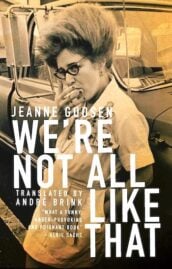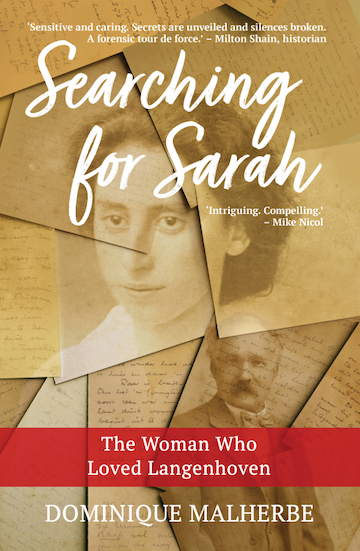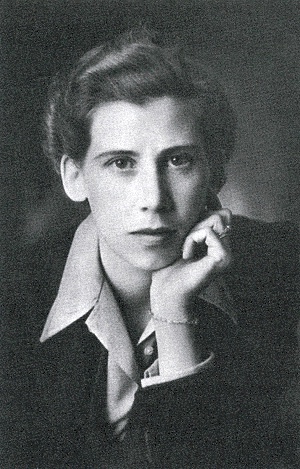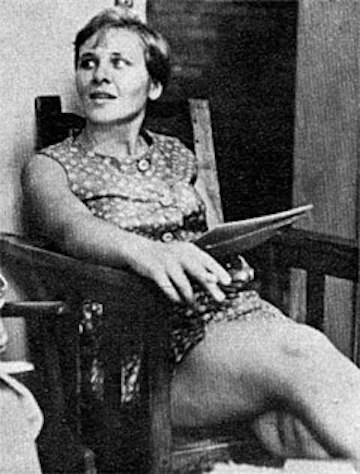6 Notable South African Women Poets
By Alex J. Coyne | On September 15, 2023 | Updated June 1, 2025 | Comments (0)

The landscape of Southern Africa is sometimes harsh and unforgiving. The same may be said about much of the country’s history. Still, it is impossible to experience the country without feeling inspired by its culture, nature, and sheer spirit.
The country’s literary legacy has produced legendary authors like Olive Schreiner, Nadine Gordimer, and Elsa Joubert. There are just as many poets, like Ingrid Jonker, Elisabeth Eybers, and the others listed here, who have forever etched their words and phrases in world literature.
Here are six notable South African women poets to add to your reading list, with links to samples of their poetry if English translation is available.
. . . . . . . . .
Sarah Goldblatt

Sarah Eva Goldblatt (1889 – 1975) was a journalist, editor, and poet. She was born in London to parents David Nathan Goldblatt and Fanny Esther Smith. The family relocated to Southern Africa in 1897. David Goldblatt became known for having been instrumental in getting the Yiddish language recognized in South Africa.
At age twenty-one, Sarah began working for author C.J. Langenhoven as a newspaper editor. She maintained lifelong correspondence with Langenhoven, eventually becoming executrix of his works after his death in 1932.
Goldblatt’s poetry, collected in Liefdeskransie (Love wreath) was published in 1920. Sarah is considered one of the first South African women to publish poetry. Her poetry was mostly aimed at younger readers and may have lacked recognition from the serious literary scene until decades after publication.
Sarah died in Belville, Cape Town, in 1975. Her influence and cultural legacy have been further explored in Searching for Sarah, written by her grandniece, Dominique Malherbe.
. . . . . . . . .
Elisabeth Eybers

Elisabeth Françoise Eybers (1915 – 2007) was a South African journalist and poet. She was born in Klerksdorp to clergyman John Henry Eybers and math teacher Elisabeth Susanna le Roux.
Eybers is considered an influential figure in South African literature, especially as part of the Dertigers (“Thirtiers”) writing movement in the 1930s that eventually gave rise to the later Sestigers (“Sixtiers”) counterculture authors group.
Her first poetry collection, Belydenis in die skemering (Confession at Twilight) was published in 1936. Her second, Die stil avontuur (The silent adventure), came out in 1939.
Eybers was awarded the national Hertzog Prize for poetry in 1943. In 1961, after her divorce, Eybers left for Amsterdam intending only a short stay. Her third collection, Balans (Balance), reflects on her time in Amsterdam, which spanned more than four decades.
Elisabeth Eybers’ last collection of poetry, Valreep (Stirrup Cup), was published in 2005. She passed away in Amsterdam in 2007, and was buried at Zorgvlied Cemetery.
- “Digteres as huisvrou” (“Poetess as housewife”)
- “Homesickness”, “At night”, “Last attempt at logic”, “Immigrant” (four poems)
. . . . . . . . .
Ingrid Jonker

Ingrid Jonker (1933 – 1965) was a South African poet and founder of the emerging counterculture literary movement. The daughter of a member of Parliament for the National Party, her views and work strongly opposed the apartheid government of the time.
Jonker has been compared to some of the most iconic modern female artists and poets, including Sylvia Plath. Her poetry, written in Afrikaans, has been more recently translated into English, as well as German, Dutch, French, Polish, Hindi, and other languages.
Jonker’s poem, “The child who was shot dead by soldiers at Nyanga” was recited by Nelson Mandela on May 24, 1994, signifying the past impact and end of the Apartheid-regime. Read a biography of Ingrid Jonker.
. . . . . . . . .
Jeanne Goosen

Jeanne Goosen (1938 – 2020) was a South African journalist, author, and poet born in Parow, Cape Town. She first studied radiography, as well as formally studying music and drama.
Her first poetry collection, `n Uil vlieg weg (An Owl Flees Away), was published in 1971. Orrelpunte (Organ pipes) appeared in 1975, establishing Goosen as a lasting voice in South African poetry.
In the 1980s, Goosen worked as a journalist for several publications, including The Paarl Post. Between the 1980s and 1990s, she relocated to the coastal city of Durban. Here, she continued writing for Tempo and supplemented her income with playing piano at a local club.
“Ons is nie almal so nie” (“We’re Not All Like That”), 1990, is considered an important prose work exploring life in a 1950s South African household. The book was later translated into English by Sixtiers poet André P. Brink.
Much of Goosen’s work explored themes of self and cultural identity, set against the backdrop of uniquely South African scenes. Daantjie Dromer (Daantjie Dreamer) was her next work published in 1993, further exploring the setting of the average South African family in the 1950s.
In 2000, Goosen relocated to the North-West province (Hartbeeshoek). After the publication of Wie is Jan Hoender? (Who is John Chicken?) in 2001, she moved again to Johannesburg — and again, to Melkbosstrand in Cape Town.
Goosen wrote her first cabaret in 2003, called “Desnieteenstaande” (“Nevertheless”), with contributors Sandra Prinsloo and Lizz Meiring.“Plante Kan Praat” (“Plants Can Talk”) was one of her final publications in 2005. She died in Melkbosstrand.
. . . . . . . . .
Gladys Thomas

Photo: False Bay Echo
Gladys Thomas (1934 – 2022) was a South African author, poet, and activist. She was born in Salt River, Cape Town, to John Adams and Dorothy O’Riodan.
Cry Rage (co-written with James Thomas Matthews) was the first poetry collection subjected to South Africa’s banning laws after its 1971 publication. Notably, Thomas was one of the first South African black female authors to publish.
With her husband, Thomas founded a theatre group called the Getwize Players. She continued to write, presenting her poetry at Black Consciousness Movement (BCM) meetings during the 1970s and contributing plays to the Getwise Players.
Gladys Thomas achieved international recognition for her work in 1980 as part of the American Kwanzaa Awards.
Spotty Dog and Other Stories: Stories for and of South African Township Children appeared in 1983. The prose collection was particularly notable for its perspective on South African township life. This was followed by her next poetry collection, Exile Within (1986).
Her work is considered protest literature, with strong opposition to the conservative South African government of the time. More recognition for Thomas followed when her play, Avalon Court, won the African Literary Award for 1990. She received the prestigious National Order of Ikhamanga in 2007 for her valuable contributions to literature.
- “Fall Tomorrow”
- Cry Rage (several poems)
. . . . . . . . .
Bessie Head

Photo: Khama III Memorial Museum Archives
Bessie Amelia Head (1937 – 1986) was a South African journalist, writer, poet, and activist born in Pietermaritzburg, to a Scottish mother and unknown South African man. She spent her early life placed between several families, eventually completing her studies to become a teacher.
Head accepted a teaching post in Clairwood, Kwazulu-Natal in 1956. Subsequently, she moved to Johannesburg and wrote a newspaper column for teenagers. She married and gave birth to a son in 1962. Soon after, some of her well-received poems, including “Things I Don’t Like,” and “Where the Wind Don’t Blow,” appeared in literary journals.
Head accepted another teaching post in 1964: this phase of her life would take her to Botswana, where she was unable to return to South Africa.
In 1968 she published her debut novel Where Rain Clouds Gather. This was followed by Maru in 1971, and The Question of Power in 1973. Most of her fiction was set in Botswana, except for her debut. The Cardinals, published in 1993.
Bessie Head was awarded the national Order of Ikhamanga posthumously in 2003 for her contribution to literature.
Contributed by Alex J. Coyne, a journalist, author, and proofreader. He has written for a variety of publications and websites, with a radar calibrated for gothic, gonzo, and the weird. His features, posts, articles and interviews have been published in People Magazine, ATKV Taalgenoot, LitNet, The Citizen, Funds for Writers, and The South African, among other publications.
More by Alex Coyne on this site
- Nadine Gordimer, South African Author and Activist
- 8 Essential Novels by South African Author Nadine Gordimer
- Jeanne Goosen, Author of We’re Not All Like That
- 6 Notable South African Women Poets
- The Banning of Nadine Gordimer’s Anti-Apartheid Novels
- Olive Schreiner, Author of The Story of a South African Farm
- 10 Unforgettable Books by South African Women Writers
- Ingrid Jonker, South African Poet and Anti-Apartheid Activist
- The Works of Flora Nwapa
Leave a Reply